2011 Arctic Cat M1000 Sno Pro 162 Review

Power, braun and business
It is known and respected that the mountain superman of mountain supermen is Arctic Cat’s M1000. It has the highest available horsepower and torque of any mountain sled on the market, which keeps the M1000 at the top of Arctic Cat’s food chain in its mountain arsenal. As Snowmobile.com’s deep powder team we passionately voice our position on the M1000 as our “All-time fave mountain sled.” When riding in the deepest powder nothing even stays with this M1000.
Engine Type:Horizontal In-line
Cylinders:2
Engine Stroke:2-Stroke
Valve Configuration:Reed Valve
Displacement:999 / 61
Starter:Electric
Turbocharged:No
View Full SpecFor 2011, just as the previous year, the M1000 is only available in the Sno Pro package and in one track configuration, the 162x15x2.25. As in 2010, Arctic Cat’s marketing types said by offering the M1000 in a single flavor, the 162 Sno Pro reflects the company’s desire to streamline manufacturing since the majority of M1000 models purchased in the West have traditionally been the 162 Sno Pro. From model 2010 to model year 2011, no changes were made to the M1000 – good things left alone are OK with us.
The model-year 2011 Sno Pro M1000 is built and shipped with Fox Float shocks on both the front and rear suspension. The float rear skid works well with the Fox Floats, which alleviates the need for heavy springs, while delivering a lightweight and durable rear skid. The AWS VI double wishbone A-arm front suspension with Fox Float shocks at times seem to “take a set” to a slightly-collapsed position. We at Snowmobile.com feel that Cat should consider installing coil over shocks on the front to compensate for the M-1000’s lighter-than M8 front end.
The 999cc power plant is proven, and through its years in the West, the big bore Twin has proved strong and reliable. The motor’s combustion process is fueled by two 50mm throttle bodies and batteryless electronic fuel injection (EFI). With a bore of 90.3mm and a stroke of 70mm, the M1000 delivers 162 HP at 7,250 – 7,300 rpm, and a healthy 116-to 118-foot-pounds of torque. Here is a quick school lesson check on how the mathematical torque figure is derived. After peak horsepower is pulled from the optimum RPM (revolutions per minute) from a dynometer, this formula calculates torque: Horsepower x 5252 / RPM. From plugging in the above HP (162) and RPM into the formula, a sum of 116 foot pounds of torque spits out; and that is the M1000’s hot and sweet claim.
A simple way to explain torque is by visualizing a one-foot long wrench placed on the driven clutch’s through-bolt, and a116-pounds of force is applied to the wrench. When we mention the 1000 Cat having beefy torque, it is just that, and in a class of its own That’s what makes the big twin mountain Cat like no other in the steep and deep.
Power to weight is king in the mountains, and the lightweight crop of 800s – M8 Sno Pro, Summit X, and Pro Ride RMK, have a sweeter power-to-weight ratio than the 1000cc Cat M. But, the 800’s torque ratio is not as robust as the 1000’s, thus when needed, the 1000’s fat torque ratio – the twisting force of power to move rotational and static mass come in handy; that is what makes the big block big bore brutal in stupid sick deep snow.
We applaud Cat for its blow-molded seat that is light and tall. The tall and tear-drop tapered seat gives the rider the needed body position for trail riding (which they do now and then) and minimal hindrance when swinging a foot from one running board to another. Also, we like the ample out-of-the-way waterproof storage that is easily accessible. While other manufacturers shy away from storage, Cat embraces it, without bulk and added weight.
The hood’s vents over the big Twin 1000 are covered with Frog Skinz, a breathable nylon-like material that has microscopic perforations. This keeps unwanted snow and moisture from entering through the hood — and ultimately — onto the motor and clutches.
The M1000 uses Cat’s proprietary Power Claw track, which delivers traction for deep powder climbing like no other track to date. The 15-inch wide Power Claw track combines the best features of Cat’s Attack 20 track (from the King Cat and early M7 years) and adds aggressive traction from a finger track. The 80 durometer, three-pitch track has negative 20-degree paddles (just as the Attack 20 track had) and traction towers that tilt a positive 20-degrees. With its 162-inch track, 160-plus horsepower and 116 foot-pounds of torque, the M1000 offers ample grunt and deep snow agility. The traction towers blend with the paddles on the paddles’ outer edge and also near the track’s edge. Weighing the same as the Challenger track, this unit’s opposing paddles and fingers give it undeniable traction, flotation and hookup.
At the rear end, the rear axle uses two-wheels, which sit inside the slide rails. This reduces weight and gives the track bite when poked into a steep mountainside for a cross cut.
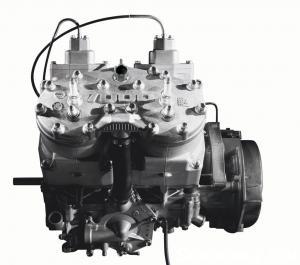 Arctic Cat’s monster 999cc twin is a master of torque and has draft horse muscle.
Arctic Cat’s monster 999cc twin is a master of torque and has draft horse muscle.
Down the trail the M1000 is a powerhouse. As far as rider comfort on rough trail, the M is what I would call “firm in its ride,” or in other words a bit rough, but always predictable. But if the air shocks are pumped to a high-pressure setting, the M1000’s front-end bucks. Other than choppy feedback through to the hands and through the arms, the M1000 is a pleasure to ride in the steep and deep backcountry, on a chassis that makes it easy to sidehill.
We find that the M’s skis are not aggressive enough for its 162-inch track. It bullies and pushes the skis through corners when cutting up a hard-packed trail. These skis are OK for mountain riding, sufficient to adequately get the job done, but for you corner burners, an aftermarket ski may give you more of what you want for packed- snow conditions.
Telescoping handlebars are standard and raise and lower over 12-positions in 3/8-inch increments. These bars allow the driver to drop or lower the bars to a needed position that is best suited for terrain, attack, mountain, arm length and body height. We think these bars are snowmobiling’s best idea since electronic reverse.
Arctic Cat refers to its M series as “Expert Grade” mountain sleds. We’ve always been a fan of how the M handles in the steep and deep. When it comes to climbing, sidehilling — both up or down hill — or performing any serious mountain maneuver, the M1000 and its torque-filled motor have the power and agility to get the job done. Arctic Cat’s M1000 is a great boondocking, sidehilling or hillclimbing, deep snow machine.
If you are the type of guy who likes the premium stuff, the M1000 will not disappoint as it retains the top motor for all mountain sleds. The monster 999cc Twin with electronically-controlled 50mm throttle bodies is a master of torque and has draft horse muscle. It pulls.
We hope Arctic Cat will continue building the M1000. Yes, we are fans of lightweight 800s – huge supporters – but we firmly contend the M1000 is a keeper. Its torque is a beautiful thing.
| 2011 Arctic Cat M1000 Sno Pro 162 Specs | |
| Engine | Arctic/Suzuki 999, two-stroke, liquid-cooled, twin; 50mm throttle body, batteryless electronic fuel injection |
| Horsepower | 162 |
| Drive | Arctic RPM sensing drive with Arctic roller cam ACT driven |
| Front Suspension | Arctic AWS VI A-arm suspension; Fox Float air shocks; 9.2-inches of travel |
| Rear Suspension | Arctic M Series parallel rail slide with Fox Zero Pro shock on front arm and Fox Float air shock on rear arm; up to 19.0-inches of travel |
| Length | 132.0 in |
| Width | 46.0 in |
| Ski Stance | Adjustable from 39-41 inches |
| Track | 15 x 162 x 2.25 Power Claw |
| Weight | NA |
| Fuel Capacity | 11.4 US Gal |
| MSRP | US$13,199.00 — C$15,999.00 |
Related Reading
2011 Arctic Cat M8 Lineup Review
2011 Arctic Cat Z1 Sno Pro Review
2011 Arctic Cat CFR 1000 Review
All Things Arctic Cat on Snowmobile.com



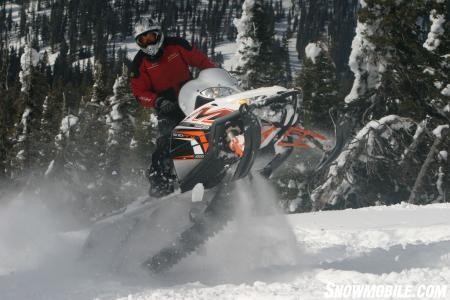
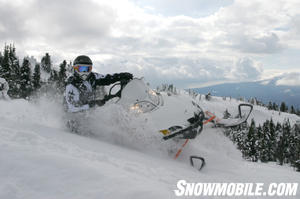
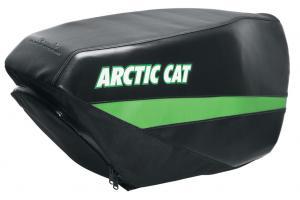
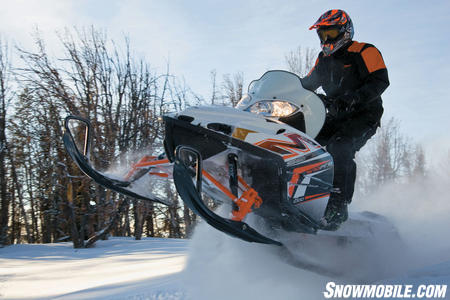





 Your Privacy Choices
Your Privacy Choices